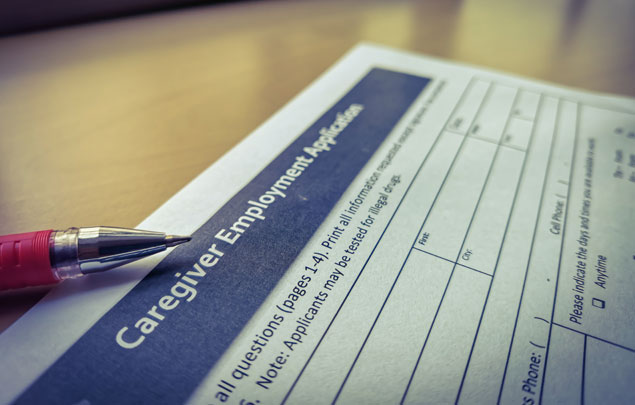|
1. You will tire quickly and not be able to sustain a good 15 minutes at a high rate of exertion. 2. You will put yourself at risk for injury because your back, leg, and feet muscles have not had the opportunity to adapt to an increased activity level. 3. You will be very sore the next day. 4. Your might have to deal with people asking if you are okay - because you are huffing and puffing and your face is lobster-red. 5. You will increase your risk for heart arrhythmias (strange heartbeat rhythms) during and after the exercise, which will at least worry you, and could possibly be more serious. 6. You may discourage yourself from working out again because of results 1-5 above. |
If you currently participate in absolutely no physical activity other than what is required for normal life-walking through the grocery store or cruising from your parking space to your office cubicle, then really start out easy. The first day out, set a defined time limit like 15 minutes. Do something you enjoy, like walking, swimming, dancing, or whatever works for you. As you exercise, think about how you feel. In the beginning, it is a good idea to try for low-intensity exercise.
|
Here are some general guidelines for determining the level of intensity at which you are working:
|
These levels are general guidelines and will be a little different for everyone. It is also useful to talk to a certified fitness professional about your target heart rate (THR). THR is a complex factor affected by your starting level of fitness and any medical conditions or medications you may be taking. Determining THR is out of the scope of this article.
Every week, try to add five minutes to your exercise time until you have met your individual goal. Initially, that goal may be 30 minutes a day. After some time, you might want to increase that target again.
Many non-exercisers have a conception that all exercise must be done in a gym, and they don't like that idea. They might recall enforced gym class in high school, or they might imagine there will be serious body-builders standing around "judging" their beginner efforts. Some women don't like working out in front of guys, and some guys don't like starting out in front of more advanced guys. Fortunately, there are about a million different ways of exercising, and only a few of them involve an actual gym.
One of the advantages to a traditional gym setup is that you can usually tap into the expertise of the staff. Many gyms have certified personal trainers on staff, and the group fitness teachers are generally certified by one of the major national associations. That body of knowledge can really help you when you're starting out, as the staff is usually more than happy to walk you around and show you how to use all of the equipment so that you don't have to feel clueless, or worse yet, injure yourself by doing something incorrectly.
Personal trainers have a goal of helping new exercisers (what they call "the deconditioned") set up a fitness plan that helps to meet their personal goals. They are usually very good at making sure you don't exert yourself so much in the first few days that you become sore and don't want to go back. Having an appointment with a personal trainer also provides some accountability: You are less likely to skip the gym if you know someone is waiting for you, especially if you have already paid for a session.
There are also many independent personal trainers who are not employed by a traditional gym. They might work out of their own private facilities; this is fantastic if you don't want to exercise in front of other people and you need a workout buddy. Others will come right to your house. If you do look for a personal trainer -- particularly an independent one -- make sure you verify that they are certified. The two major national certification bodies are the American Council on Exercise (ACE), and The Aerobics and Fitness Association of America (AFAA). There are a few other good certification agencies, but these are the major national ones.
Many people prefer a group fitness environment -- some kind of a class. Again, classes are not limited to what you can find in a gym, and they aren't just step aerobics. A class can be martial arts, ballet for adults, swing dancing, yoga, fencing, advanced swimming, basketball drills, you name it. The group environment provides people with the added benefit of social interaction. If you are looking to meet new people as well as exercise, and if you thrive on the energy of a group environment, then group fitness may be the right thing for you. Just one word of advice on group fitness: Make sure the instructor is aware that you are just starting out. Try not to start out with activities that are labeled "advanced," like "Advanced Super Death Kill Mega Step Turbo Cardio Kick." Hopefully no such class exists, but if it does, don't take it on your first day out. Look for classes labeled Intro, Beginner, or Gentle. Some people like to torture themselves with fitness, so at least one person who reads this will still start out with Advanced Super Death Kill Mega Step Turbo Cardio Kick. If that person is you, just make sure to tell the instructor that you are just getting back into exercise. He or she should be able to tell you how to modify your exercise to fit your fitness level.
In a group fitness class, don't feel discouraged if everyone else seems to know what they're doing and you keep turning the wrong way or falling off the step. 1) Everyone else is probably turning the wrong way too at one time or another and you just aren't seeing it or 2) Three weeks ago, they didn't know any of the moves, either and 3) If you are having difficulty with a move -- or with a step -- then modify it to your needs.
Keep an eye on your exertion level as always. If you are in front of a mirror, keep looking at your face. If you turn bright red, or if you are gasping for breath, that's a good sign that you need to cut down your intensity. Don't worry about what the rest of the class is doing. You can do a simple step-touch and you will still be keeping your heart rate up.
One great thing about group fitness, aside from the social aspect, is that the music and activities change often, which helps keep the class from getting boring. In a martial arts or traditional dance class, you also get to master new moves and advance through levels, which will keep things interesting for you.
If you do decide to get a gym membership, be sure to check out a range of gyms before you commit to one. Find one that is convenient either to your work or home. If you have to go far out of your way, the odds are good that you won't go. If you have small children, try to find a gym that provides child care. If you like group fitness, check out the class schedules to make sure your gym has classes you are interested in at times that work for you. Most importantly, test drive the gym. Most clubs will let you work out for free for one day if they know you are thinking about joining. Others will charge you a daily rate that might be $10 to $15 (usually less than the cost of movie admission). Try the place out and see how you feel there. Every gym has its own feel. Some are like beautifully-decorated day spas, some are women-only, some have a no-frills, "I'm here to work" environment, and others are more like a social club, with lots of friendly conversation. Still others tend to be a little like a meat-market. That's why it's a good idea to try before you buy. If you are looking for a meat market, you really don't want to join a women-only gym, but if you hate socializing while sweaty, you would probably prefer the no-frills "I'm here to work" environment. Also, be sure that your gym has room for you to grow. When you first start out, a small, intimate gym might be less intimidating for you. But after a few months, you will have mastered all of the equipment and have no room to move up. Larger gyms can be scary at first, but they often have a wider range of equipment and classes for beginners through conditioned athletes.
If you feel that you don't have enough money to afford a gym membership or specialized classes like ballroom dance or martial arts, (or if that idea just doesn't appeal to you) there are plenty of ways to exercise for free. Keep in mind that any of these methods require a little more discipline on your part. It is an unfortunate fact that, as a society, we tend to value what we pay for. If you are forking over the money for the gym or the dance class, you are more likely to go. Also, the opportunity to walk in the park or bike around the neighborhood has always been there, so if you haven't done it yet, it will take some serious self-motivation to start doing so. That being said, there is almost no exercise as healthful and beneficial as simply walking. It is free, you can do it anytime, anywhere, and you need no special equipment.
Whatever you choose to do, find ways to keep it interesting. If you use the same workout DVD every day, you will master all the moves and become bored. Buy new videos or rent them from the library. Exchange them with friends. If you walk or run outside, change your path from time to time. Change your music, try new classes. Ask friends to join you. Involving a friend in your exercise has huge benefits for both of you: It can deepen your friendship and it gives them a motivation to exercise. You could be a part of a positive life change for someone else.
As you progress with your fitness goals, you will reach many milestones along the way. If you started out only walking 10 minutes a day, and have built up to three 15-minute mini-walks, that is fantastic and you will want to celebrate. Reward yourself for your progress, but don't reward yourself with unhealthy foods. Splurge on a new pair of walking shoes, a new workout outfit, new music downloads, or something else fun, rewarding and non-edible (or at least healthy).
































